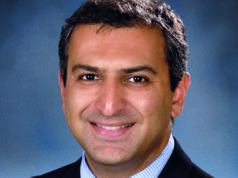
The potential for cost and time to be key factors in low levels of outcomes data reporting emerged during a national survey of the off-label use of approved endovascular devices for complex aortic aneurysm repair.
Grayson S. Pitcher, MD, an assistant professor of vascular surgery at the University of Rochester in Rochester, New York, and colleagues conducted targeted sampling to identify vascular surgeons with experience in off-label treatment complex repair, disseminating an electronic survey to 291 individuals that achieved a response rate of 38%.
The researchers found that from an estimated number of elective cases totaling nearly 1,800 per year, the majority—1,307—were performed at medical centers without a Food and Drug Administration (FDA) physician-sponsored investigational device exemption (PS-IDE).
“Estimates of off-label repair are underrepresented in the literature in the U.S.,” Pitcher et al report. “Physician-modified endograft [PMEG] has become the dominant modality. Underreported outcomes data appear to be limited by non-standardized PS-IDE reporting to the FDA, the lack of VQI [Vascular Quality Initiative] participation and prospective institutional data collection, and limitations imposed on publication and presentation.”
Pitcher first presented the survey findings during the 2024 Vascular Annual Meeting (VAM) in Chicago (June 19–22), and they have since been published in the Journal of Vascular Surgery. During VAM 2024, Pitcher reminded delegates of the FDA bar for the off-label use of approved devices: deep knowledge of the product, use based on sound scientific rationale, and use and effects record-keeping. “Unfortunately, the 2013 advisory statement from the SVS was contradictory,” he said, recommending against the performance, presentation and publication of off-label procedures. “This has resulted in a lack of transparency to clinical practice and outcomes data, despite an increase in off-label cases.”
Pitcher told VAM attendees the survey was aimed at not only estimating national volume but better understanding the behaviors of vascular surgeons performing off-label endovascular repairs of complex aortic aneurysms.
Covering a total of 89 institutions in 38 states—including four with Cook Medical device PS-IDEs and 11 other PS-IDEs—the survey showed that 43% of sites perform more than 15 cases per year and that PMEG (63%) was the common and preferred technique, with a market share dominated by Cook, Pitcher reported. “What stands out among this group [of surgeons] is that this is a young group: the majority of respondents were less than 45 years of age, within the first 10 years of practice, and [with] the majority having the technical skills and requisite technical skills having trained at a center with a PS-IDE,” he said.
An exit survey demonstrated that only 29% of respondents always referred to PS-IDE centers “with multiple barriers for referral listed,” Pitcher continued. Only 61% participated in the VQI and 57% maintained an institutional database, he added.
“This study highlights an underrepresented population and the barriers that inhibit referrals to PS-IDE centers,” Pitcher explained. “We felt the best way to visualize this was to use the Dartmouth Atlas hospital referral regions [HRRs] where each outlined area represents a regional healthcare market where patients are referred for major cardiovascular surgery,” he said, pointing to a patchy map of the continental U.S. depicting coverage of PS-IDE centers and those with off-label use. “Even with off-label use in the U.S., only 20% of HRRs are represented.”
Pitcher acknowledged limitations, including recollection bias and the limited number of vascular surgeons surveyed. “There is a need for access to commercially available devices and transparent outcomes, with the majority of respondents in this survey interested in a national collaborative,” he concluded.
Pitcher was asked about a discrepancy between a lower level of those taking part in database collection and a higher number expressing interest in being part of a registry. Pitcher noted that respondents reported that the limitation was cost and time, suggesting the potential of a VQI lite to ease data input.












